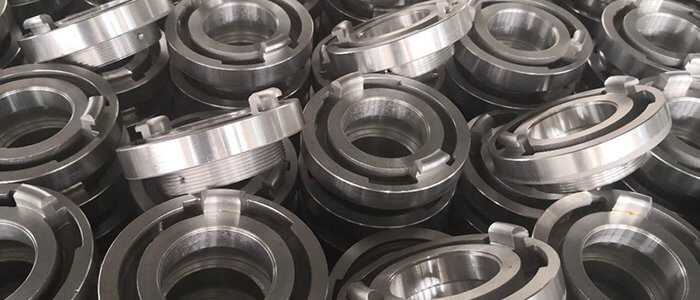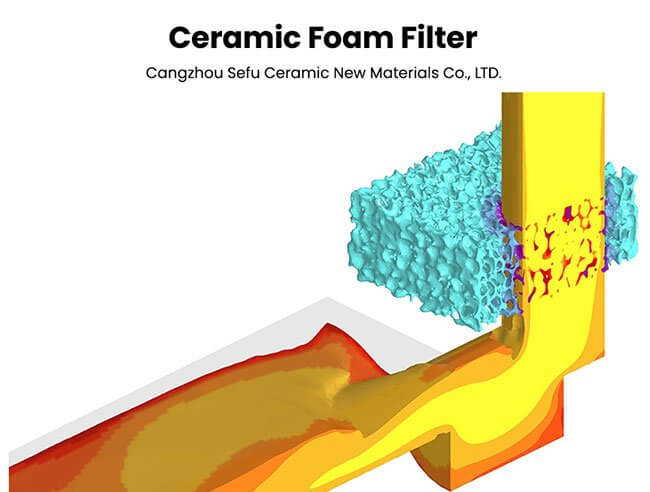Introduction:
Steel casting is a critical component of various industries, from construction to automotive manufacturing. In South America, the steel casting foundry industry has been steadily growing to meet the demands of both domestic and international markets. In this comprehensive article, we’ll explore the key aspects of steel casting foundries in South America and delve into the crucial role of ceramic foam filters in the casting process.
I. Steel Casting Foundries in South America:
1. Historical Perspective:
South America has a rich history in metalworking and casting, dating back to pre-Columbian times with the Inca and other indigenous civilizations. The ancient metallurgical practices of these societies laid the foundation for the modern steel casting industry in the region. From forging intricate jewelry to crafting functional tools and weaponry, the craftsmanship of these early metalworkers is a testament to their skill and innovation.
Fast forward to the present day, and South America’s steel casting foundries have evolved significantly. They have adopted advanced technologies and techniques to become major players in the global steel industry. In doing so, they have integrated traditional craftsmanship with cutting-edge methodologies to produce high-quality steel castings.

2. Market Overview:
The South American steel casting industry plays a vital role in supplying components for various sectors. These include construction, mining, agriculture, energy, transportation, and more. As the region experiences rapid infrastructure development and industrialization, the demand for steel castings has surged, fueling the growth of foundries across South America.
The growth of these foundries has not only created jobs but has also contributed significantly to the regional economy. Furthermore, the industry’s expansion has fostered innovation and increased competitiveness on the global stage, with South American foundries exporting their products to markets worldwide.
3. Key Players:
To gain a better understanding of the industry’s dynamics, let’s take a closer look at some prominent steel casting foundries in South America:
– Ternium Siderar (Argentina): Ternium Siderar is one of Argentina’s leading steel producers. It operates a state-of-the-art steel casting foundry known for its commitment to quality and sustainable practices. The foundry specializes in producing a wide range of steel components, including those used in construction and automotive applications.
– Gerdau (Brazil): Gerdau is a Brazilian multinational corporation and one of the largest steel producers in the world. With a presence in multiple countries, including Brazil, Gerdau’s steel casting operations are renowned for their scale and efficiency. They supply steel castings to diverse industries, from infrastructure to machinery manufacturing.
– Aceros Arequipa (Peru): Aceros Arequipa is a key player in Peru’s steel industry. The foundry’s products are essential for the country’s construction and industrial sectors. Aceros Arequipa’s commitment to sustainability and technological advancement positions it as a leader in the region.
These foundries, among others in South America, contribute significantly to the region’s industrial landscape and are vital to meeting the demands of various sectors.
II. Steel Casting Process:
1. Casting Techniques:
To produce high-quality steel castings, foundries in South America employ various casting techniques, each suited to specific applications:
– Sand Casting: Sand casting is a versatile and widely used method in the region. It’s favored for its adaptability and suitability for producing complex, large-scale components. South American foundries have perfected this technique, using various types of sand molds to achieve precise casting results.
– Investment Casting: Investment casting, also known as precision casting, is chosen for applications that require intricate details and fine surface finishes. Foundries in South America have invested in advanced equipment and expertise to excel in this method, serving industries like aerospace and healthcare.
– Die Casting: While die casting is more common in the production of non-ferrous metals, some South American foundries have adopted this technique for specific applications. It offers efficiency and high production rates, making it ideal for components in the automotive and electronics sectors.
– Continuous Casting: For certain steel products, such as billets and slabs, continuous casting is employed. This method ensures consistent quality and dimensions. It’s often used in South American steel mills to produce semi-finished steel products that are later transformed into various components.
2. Importance of Quality:
The foundation of any successful steel casting process is the unwavering commitment to quality. In South America, foundries understand that the structural integrity and performance of the final product depend on stringent quality control measures. These measures encompass every stage of the casting process, from raw material selection to final inspection.
To maintain high standards, South American foundries adhere to industry-specific certifications and quality management systems. Notable certifications include ISO 9001 for quality management and ISO 14001 for environmental management. These certifications demonstrate a commitment to producing steel castings that meet or exceed industry standards and customer expectations.
III. Ceramic Foam Filters in Steel Casting:
1. Role of Ceramic Foam Filters:
One of the key advancements in steel casting technology is the utilization of ceramic foam filters. These filters play a pivotal role in the steel casting process, particularly in the production of high-quality steel components. Their primary function is to remove impurities and ensure a cleaner melt, leading to improved casting quality.

During the casting process, molten steel can contain unwanted impurities and inclusions. These impurities, if not removed, can compromise the mechanical properties and surface finish of the final product. Ceramic foam filters act as a barrier, trapping these impurities and allowing only clean molten metal to flow through.
By using ceramic foam filters, foundries in South America and around the world can achieve exceptional casting quality and consistency, which is crucial for meeting the demanding requirements of various industries.
2. Advantages of Ceramic Foam Filters:
The adoption of ceramic foam filters offers several significant advantages to steel foundries in South America:
– Reduced Defects: Ceramic foam filters effectively capture impurities, resulting in fewer defects like porosity, inclusions, and cracks in the castings. This leads to higher overall quality and reliability of the components.
– Improved Mechanical Properties: Clean and pure molten metal leads to improved mechanical properties of steel castings. This translates to enhanced strength, ductility, and toughness, making the castings suitable for critical applications.
– Enhanced Surface Finish: Ceramic foam filters contribute to a smoother surface finish on steel castings, reducing the need for post-processing and machining. This not only saves time but also reduces material wastage.
– Cost-Efficiency: While there is an initial investment in ceramic foam filters, their use can result in significant cost savings in the long run. Reduced rework, scrap, and the need for secondary processing contribute to cost efficiency.
3. Technological Advancements:
The field of ceramic foam filters is continuously evolving, driven by the demand for higher casting quality and efficiency. South American foundries are keen on staying at the forefront of these advancements to remain competitive in the global market.
Recent innovations in ceramic foam filter technology include improved pore structures for better filtration efficiency, enhanced durability to withstand higher casting temperatures, and tailored designs to accommodate various casting methods.
Additionally, the integration of digital technologies, such as artificial intelligence and machine learning, is helping foundries optimize the use of ceramic foam filters by predicting and preventing defects in real time, further enhancing the quality and cost-effectiveness of the casting process.
Conclusion:
South America’s steel casting foundries have emerged as key players in the global steel industry. Their contributions to infrastructure development, transportation, energy, and countless other sectors are significant. The utilization of advanced technologies, coupled with the adoption of ceramic foam filters, has not only improved the quality and efficiency of the steel casting process but has also elevated the reputation of South American foundries on the global stage.
As South American foundries continue to evolve and innovate, their impact on the global steel casting market is expected to grow. They are poised to play a vital role in meeting the ever-increasing demands for high-quality steel components in the region and beyond. Through a blend of tradition, craftsmanship, and modern technology, South American steel casting foundries are forging a path toward a prosperous and sustainable future in the steel industry.


